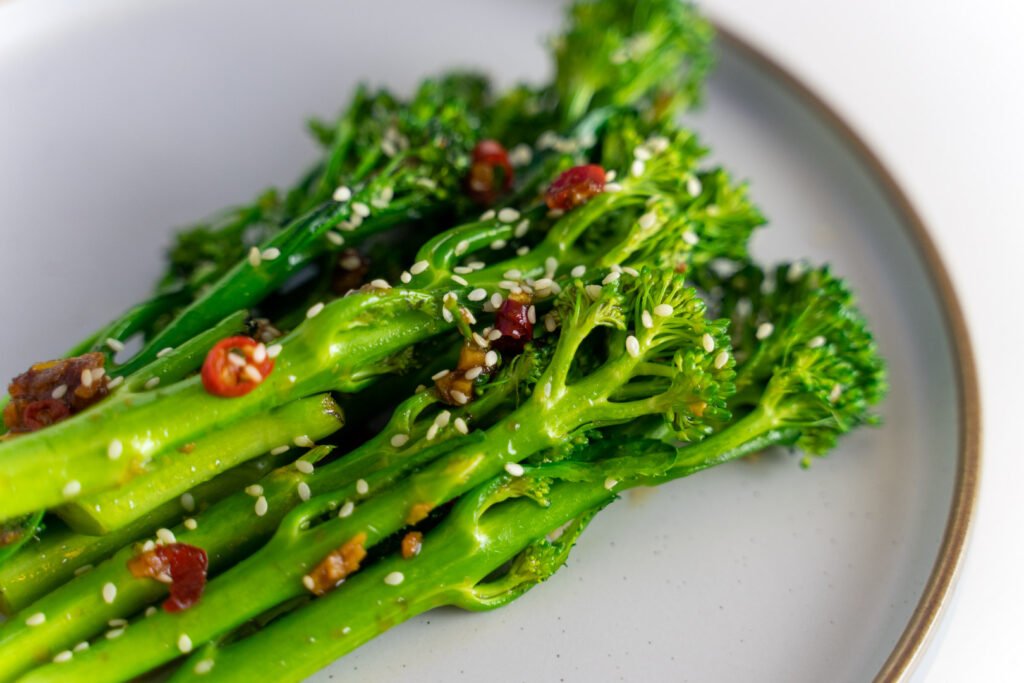Tenderstem broccoli, often hailed as a superfood, is a delightful and nutritious vegetable that has won the hearts of food enthusiasts worldwide. Its mild, sweet flavor, combined with a texture that’s both tender and crunchy, makes it a versatile ingredient in the culinary world. This article delves into the various methods of cooking tenderstem broccoli, ensuring you can enjoy its maximum flavor and nutritional benefits. Whether you’re a seasoned chef or a novice in the kitchen, this guide will equip you with the knowledge to cook tenderstem broccoli to perfection.
Understanding Tenderstem Broccoli
Before diving into the cooking methods, it’s essential to understand what sets tenderstem broccoli apart from its counterparts. Tenderstem broccoli, also known as broccolini in some regions, is a hybrid of Chinese broccoli (kai-lan) and regular broccoli. It boasts long, slender stems topped with small, delicate florets, and unlike traditional broccoli, every part of tenderstem broccoli, from stem to floret, is edible. This attribute not only reduces waste but also offers a variety of textures in a single bite.
Preparing Tenderstem Broccoli for Cooking
Proper preparation is key to bringing out the best in tenderstem broccoli. Start by washing the vegetable under cold running water to remove any dirt or residue. Although the stems are edible, you may want to trim any woody ends for a more uniform cooking experience. If the stems are particularly thick, you can also peel the outer layer to ensure that they cook at the same rate as the florets.
Steaming to Perfection
Steaming is a gentle cooking method that preserves the delicate flavors and nutrients of tenderstem broccoli. To steam, fill a pot with a few inches of water and bring it to a boil. Place the broccoli in a steamer basket above the boiling water, ensuring that the water does not touch the vegetables. Cover the pot with a lid and let the broccoli steam for about 3-5 minutes. The key is to achieve a tender yet slightly crisp texture. Once done, you can season the broccoli with a pinch of salt and a drizzle of olive oil or lemon juice for an added zest.
Sautéing for Flavor
Sautéing tenderstem broccoli in a bit of oil over medium-high heat unlocks a depth of flavor that steaming cannot achieve. Begin by heating a tablespoon of olive oil in a pan. Add the broccoli and sauté for about 5-7 minutes, stirring occasionally. This method caramelizes the edges of the broccoli, giving it a slightly crispy texture and a rich, nutty flavor. To enhance the dish, consider adding garlic or chili flakes in the last minute of cooking for an extra kick.
Roasting for a Crisp Finish
Roasting tenderstem broccoli transforms it into a crispy, flavorful delight. Preheat your oven to 400°F (200°C), and line a baking sheet with parchment paper. Toss the broccoli with olive oil, salt, and pepper, ensuring each piece is well-coated. Spread the broccoli in a single layer on the baking sheet, and roast for about 15-20 minutes, or until the edges are crispy and golden brown. Roasting not only intensifies the natural sweetness of the broccoli but also adds a satisfying crunch.
Incorporating Tenderstem Broccoli into Dishes
Beyond the basic cooking methods, tenderstem broccoli can be a star ingredient in a myriad of dishes. It pairs beautifully with pasta, complements grilled meats, and adds a nutritious crunch to salads. Its mild flavor makes it a fantastic canvas for a variety of seasonings and sauces, from classic garlic and lemon to bold, spicy, or umami-rich condiments.
Conclusion
Tenderstem broccoli, with its unique flavor and texture profile, offers a world of culinary possibilities. Whether steamed, sautéed, or roasted, this versatile vegetable can elevate any meal, providing both nutritional value and gastronomic delight. By following the guidelines outlined in this comprehensive guide, you can master the art of cooking tenderstem broccoli, ensuring that each dish is as nourishing as it is flavorful. So, the next time you find yourself pondering over how to cook tenderstem broccoli, remember that with a little care and creativity, you can transform this humble vegetable into a gourmet delight.

